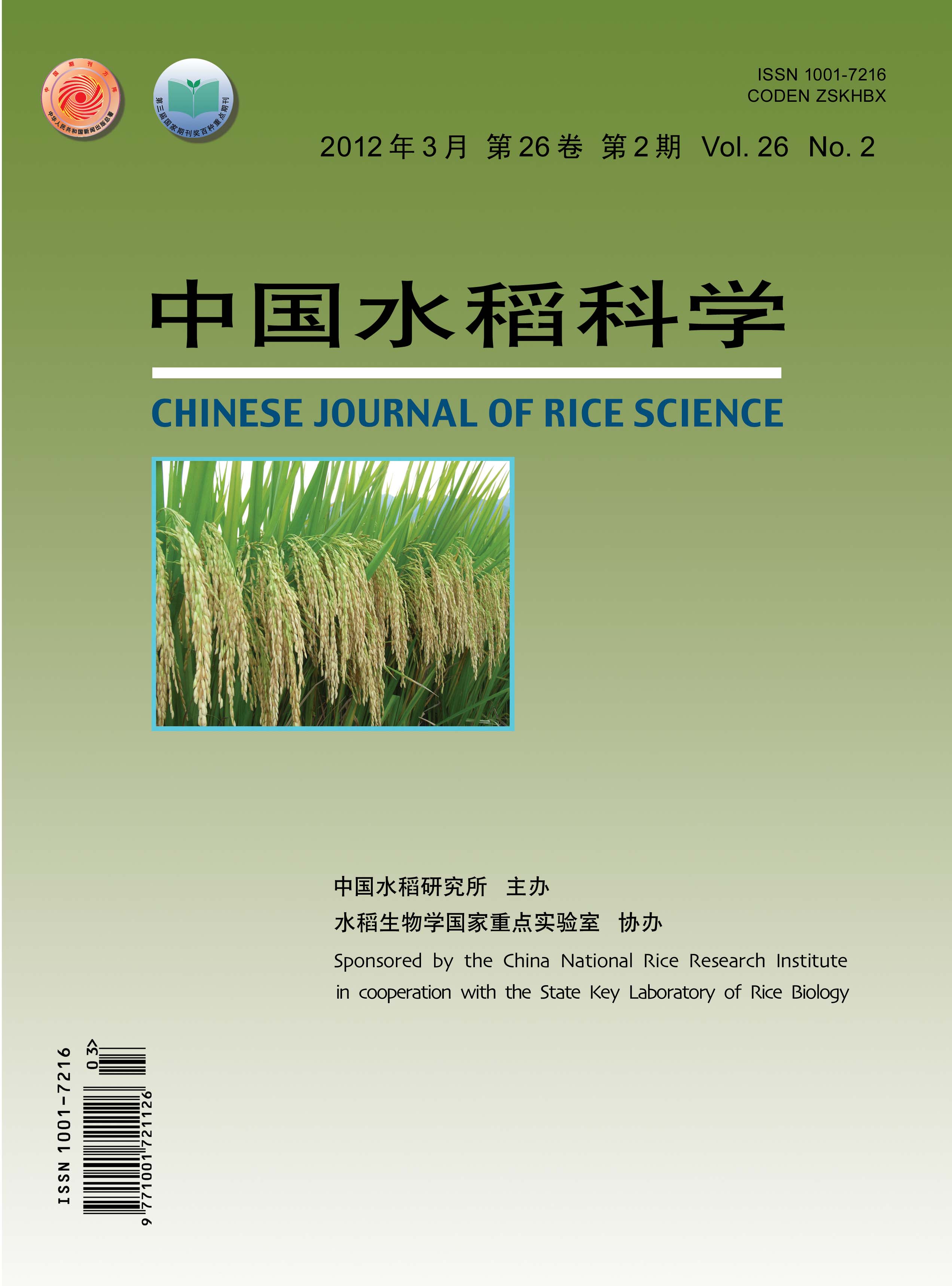|
|
Nitrogen Absorption and Utilization Characteristics of japonica Rice Cultivars with Different Productivities at Their Optimum Nitrogen Levels
LI Min1,2 , ZHANG Hongcheng1,*, MA Qun1 , YANG Xiong1, LI Guoye1, WEI Haiyan1, DAI Qigen1, HUO Zhongyang1, XU Ke1
2012, 26(2):
197-204.
DOI: 10.3969/j.issn.10017216.2012.02.009
Based on the concept of the highest population productivity, the yield components and the characteristics of nitrogen absorption and utilization of three types of rice cultivars with low, medium and high level of the highest population productivities were investigated at their optimum nitrogen levels. With the increase of the highest population productivity, the total spikelet number increased remarkbly, while the seed setting rate and 1000grain weight showed no significant differences. The nitrogen accumulation at Nn, heading and maturing stages increased correspondingly as the productivities increased, whereas no significant difference was found at elongation. In order to analyze the nitrogen absorption progress of rice genotypes with different productivities, the whole growth duration was divided into four phases, i.e., from transplanting to critical stage of productive tillering, from critical stage of productive tillering to elongation, from elongation to heading, and from heading to maturing. Results indicated that, the nitrogen accumulation during each period increased typically as the productivity increased during all growth phases except the phase from critical stage of productive tillering to elongation.Compared with low productivity genotype, the nitrogen translocation amount and nitrogen translocation rate of mediumproductivity genotype increased evidently. However, there was negligible difference between medium and high productivity types. Based on the results above, it was concluded that rice cultivars with the highest population productivity were featured by rapid nitrogen absorption before Nn, slow nitrogen absorption from Nn to elongation, steady nitrogen absorption from elongation to heading, and massive nitrogen absorption from heading to maturing; and a large but not excessive amount of transferred nitrogen from stems and leaves after heading.
|

